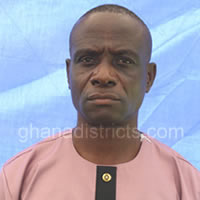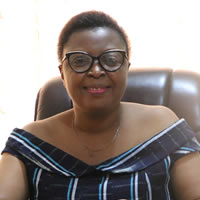This section gives a descriptive analysis of social conditions in the district. It outlines the spatial distribution, quality and level of social services (health, education, water, sanitation and housing). One of the high priorities in the national development is to satisfy basic needs, which include adequate food and shelter and essential services such as potable water, sanitation, health and education. The inadequate provision of these basic services, in qualitative and quantitative terms is a major concern for the district. The educational institutions in the district consist of 89 primary schools, 48 J.S.S. and 1 Senior Secondary School at Mankranso.
Pre-School
Facilities for pre-school (day care and K.G) are in adequate. Eighty two (82)out of 89 primary schools have pre-school facilities. This indicates that large per centage of the children in the district are pre-disposed before entering primary schools. There is marked improvement in enrolment from 2,750 in 2002 to 6,222 in 2006. The introduction of capitation grant largely accounted for this phenomenal increase.
It is worthy to note that 78% of the staff of the pre-schools are not trained and do not have the requisite academic qualification. The schools also lack basic facilities and teaching aids. Survey conducted by DPCU indicates that about 70% of educational infrastructures in the district are in good condition.
Primary
The distribution of primary schools in the district is fair as almost all communities with population of about 500 have easy access to primary education. The total enrolment in the primary schools is 17,117 with girls constituting 46%. This enrolment figure has gone up by 22% over 2002 figure of 13,387. This is to greater extent attributed to the introduction of capitation grant. There is however some amount of children of school going age who are still not in school. The table shows the number of educational institutions and their population in the district as at 2001. As a result of enrolment drives over the last few years, enrolment in the primary schools increased by 3% in 2001 whilst drop out rate was 1%.
Currently, the district has 389 primary school teachers. Out of this number, 281 representing 72% are trained whilst 108 representing 18% are untrained. The pupil-teacher ratio at the primary school level in the district is 34:1. This is slightly below the national average of 35:1. The figure could be deceptive as a little under 40% of teachers are located in the few larger settlements.
Junior Secondary School
At the J.S.S. level, the increase in enrollment in 2001 was 39%. Out of this total, Girls constituted only 7%, however, the total dropout rate was 5%. Girls constituted 47.1%. The pupil teacher ratio for J.S.S. is 20:1 as against the national average of 25:1. It is important to institute measures to curtail school drop-outs in order to improve enrollment at the J.S.S. level.
Senior Secondary Schools
As already indicated above, there is only one Senior Secondary School (SSS) in the district. The enrolment of the Mankranso S.S.S. over the last five years is shown in table 19. Presently, there are 18 teachers in the school. The student teacher ratio at the S.S.S level is 25:1 which is higher than the national average of 20:1 It is worth noting that Ahafo Ano South West recorded the lowest net secondary school enrolment rate of 24.8% compared to regional rate of 44.9% (2003 CWIQ Reports)
Educational Infrastructure
Over the years, Ahafo Ano South West District Assembly has made strenuous efforts towards improving the quality of education. However, Educational infrastructures such as classrooms in the district are considered inadequate and are of poor conditions. According to the District Education Directorate, about 70% of schools have good quality infrastructure in the form of classroom blocks and furniture. It is therefore important for the District Assembly to double its efforts at improving the quality of education in the district.
Supply Levels of Text Books in Ahafo Ano South West District
Textbooks form an integral part in the development of education
The supply of textbooks to the various levels in Ahafo Ano South West District is indicated in tables 20 (A) and (B). Table 20 (A) indicates that the supply of English textbooks for primary schools has improved over the years. Thus the ratio of pupil English textbook ratio is about 1:1. In the case of mathematics textbooks, the supply at the primary school level is about 1:0.7.
However, the ratio for the supply of Science and Social Studies textbooks are 1:0.4 and 1:0 respectively. Thus Social Studies textbooks are completely unavailable in the district. Generally, the textbooks supply at the Junior Secondary level is encouraging as the ratio of pupil-textbook supply is 1:1 except Social Studies book 2, which is 1:0.8.
However, only 68.5% of pupils in primary schools have access to textbooks. The supply of text books at the primary school level needs to be improved especially in the areas of Social studies, Science and Mathematics.
Analysis of 2001 BECE Results
The number of Candidates that Sat the BECE in Ahafo Ano South West District in 2001 was 1207. Out of this number, boys were 713 while girls were 494. Candidates were examined in all the subjects except French, which had only 141 candidates, made up of 80 boys and 61 girls. Table 21 indicates the BECE results for Ahafo Ano South West District in 2001.
The above results indicate that the performance of candidates in Vocational skills and English were low, 42.6% and 49.7% respectively. Generally the results of the BECE indicate that the performance of pupils in the district was low especially the results of the girl-child.
Literacy Rate
The importance of education in the process of economic and social development cannot be over emphasized. The results of the 2003 Core Welfare Indicators Questionaire results revealed low level of literacy of 41% amongst the adult population in the district. Out of this figure males constitute 58%. This is probably due to the fact that males far outnumber females in the district. The adult literacy rate in Ghana is estimated at 46 percent. Men constitute 62.9% while females form 37.1%. Table 22 shows Literacy by sex in Ahafo Ano South district. Most of the literates lack employable skills. The high level of illiteracy has been identified as a major constraint to the rapid socio-economic transformation in the communities.
Date Created : 11/15/2017 7:56:32 AM





 facebook
facebook twitter
twitter Youtube
Youtube TOLL FREE 0800 430 430
TOLL FREE 0800 430 430 +233 593 831 280
+233 593 831 280 GPS: GE-231-4383
GPS: GE-231-4383 info@ghanadistricts.com
info@ghanadistricts.com Box GP1044, Accra, Ghana
Box GP1044, Accra, Ghana